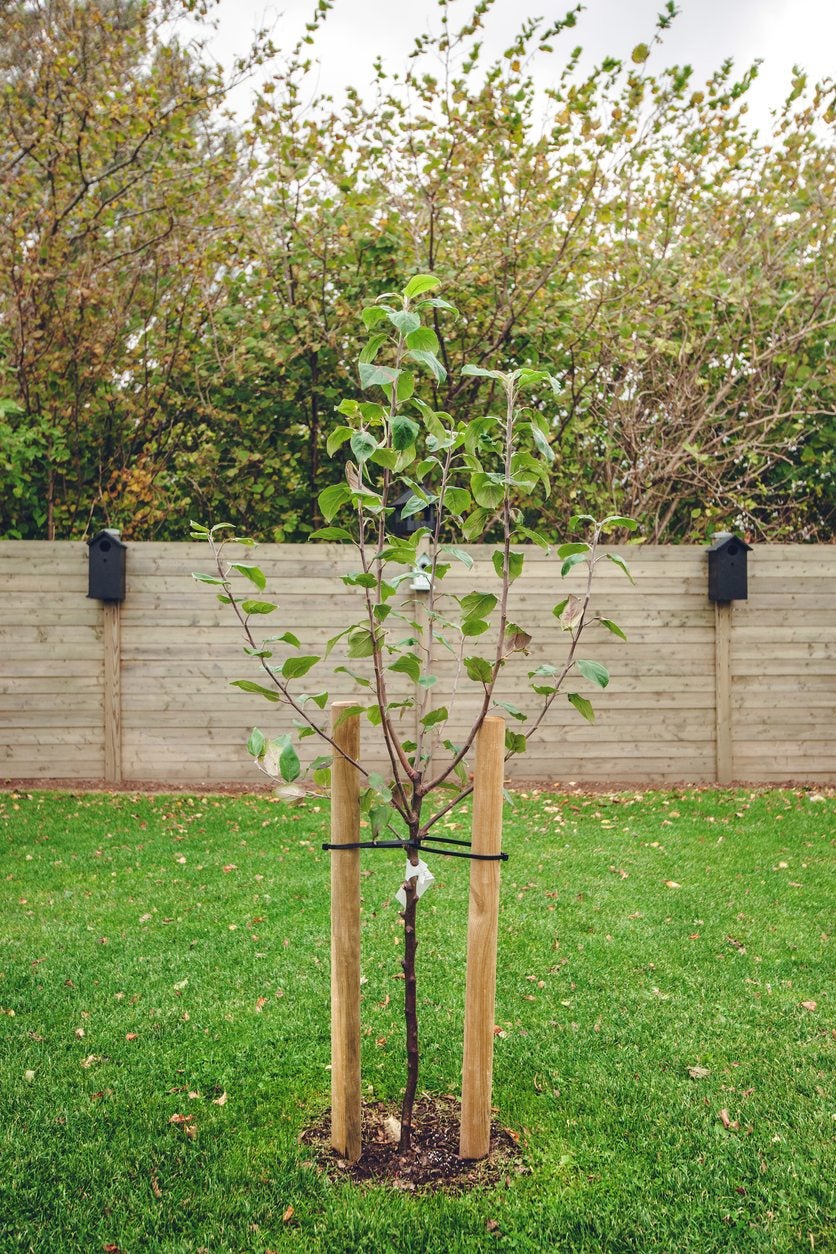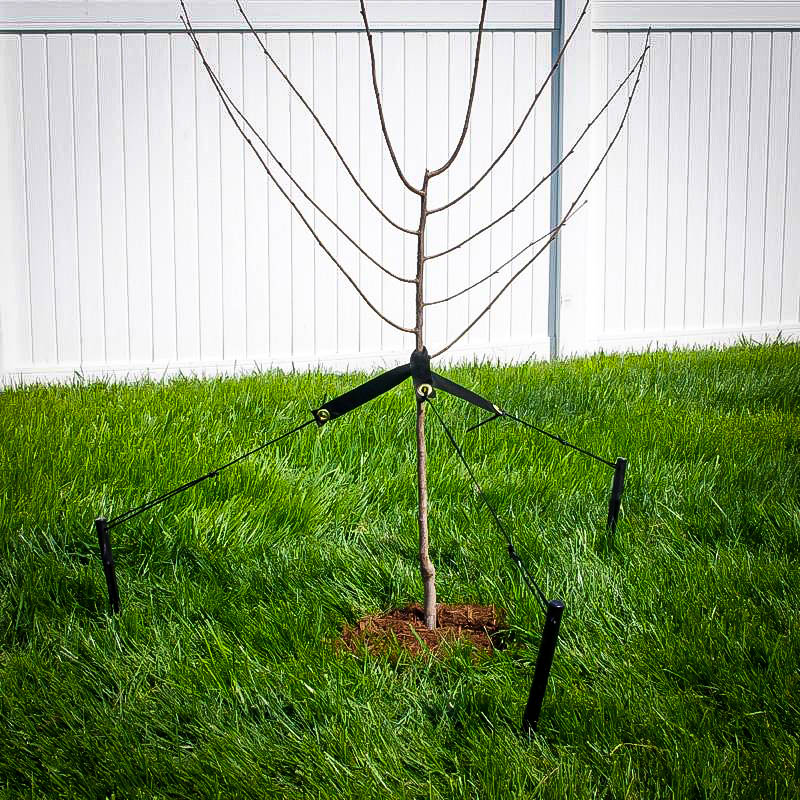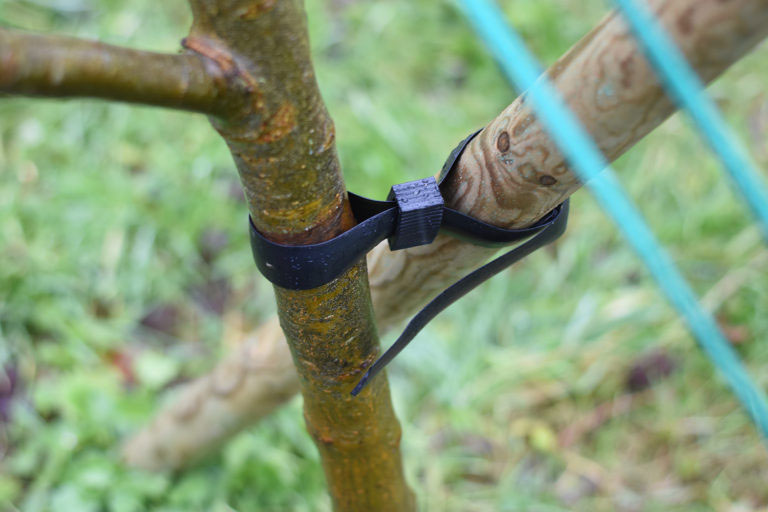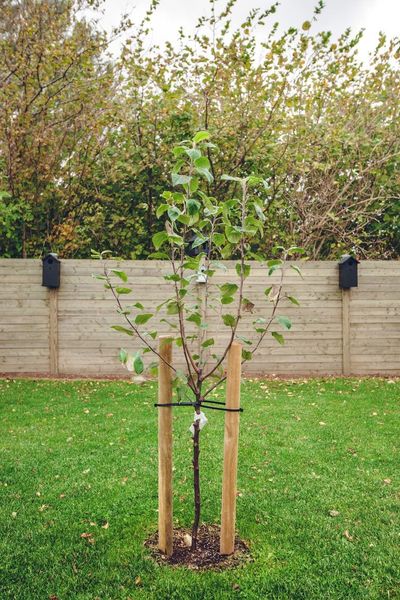Why Trees Need Support in the First Place
Young trees, in particular, often require support to ensure they grow strong and healthy. Soil quality, wind exposure, and root development are just a few factors that can impact a tree’s stability. Trees planted in areas with poor soil quality may struggle to establish a robust root system, making them more susceptible to wind damage and other environmental stressors. Similarly, trees exposed to strong winds or extreme weather conditions may benefit from additional support to prevent damage to the trunk, branches, or roots.
Support systems, such as staking, can play a crucial role in promoting healthy growth and preventing damage. By providing stability, staking a tree for support can help prevent the tree from becoming misshapen or developing weak branches. This, in turn, can reduce the risk of branch failure and promote a stronger, more resilient tree. Additionally, support systems can help trees develop a deeper root system, which is essential for absorbing water and nutrients.
It’s essential to note that not all trees require support, and the decision to stake a tree should be based on the specific needs of the tree. Factors such as tree species, age, and environmental conditions should all be taken into account when determining whether a tree needs support. By providing the right level of support, tree owners can help their trees thrive and reach their full potential.
In the next section, we’ll explore the different types of tree staking methods and provide guidance on selecting the most suitable option for your needs.
Choosing the Right Tree Staking Method for Your Needs
When it comes to staking a tree for support, there are several methods to choose from, each with its own advantages and disadvantages. The most common tree staking methods include single stake, double stake, and guying systems. Understanding the differences between these methods is crucial to selecting the most suitable option for your tree’s specific needs.
A single stake is the most common method of tree staking, where a single stake is placed on one side of the tree and attached to the trunk using a tie. This method is suitable for small to medium-sized trees and provides adequate support for trees growing in areas with moderate wind exposure. However, single stakes can be less effective for larger trees or those growing in areas with high winds.
A double stake system, on the other hand, uses two stakes placed on either side of the tree, providing additional support and stability. This method is ideal for larger trees or those growing in areas with high winds, as it helps to distribute the force of the wind more evenly. However, double stakes can be more expensive and require more maintenance than single stakes.
Guys systems are another popular method of tree staking, where multiple stakes are placed around the tree and attached to the trunk using ties. This method provides excellent support and stability for trees growing in areas with high winds or poor soil quality. However, guying systems can be more complex to install and require regular maintenance to ensure the ties do not damage the tree.
When selecting a tree staking method, it’s essential to consider factors such as tree size, wind exposure, and soil quality. By choosing the right method, you can ensure your tree receives the support it needs to grow strong and healthy. In the next section, we’ll provide a step-by-step guide on how to stake a tree for support, including materials needed and proper staking technique.
How to Stake a Tree for Support: A Step-by-Step Guide
Staking a tree for support requires careful planning and execution to ensure the tree receives the right amount of support without causing damage. Here’s a step-by-step guide on how to stake a tree for support:
Materials needed:
- Stakes (wooden or metal)
- Ties (soft or hard)
- Tree tie straps or tape
- Measuring tape or string
Step 1: Determine the stake placement
Identify the direction of the wind and the tree’s natural lean. Place the stake on the side of the tree opposite the wind direction, about 12-18 inches from the trunk. Make sure the stake is not too close to the trunk, as this can cause damage to the tree.
Step 2: Drive the stake into the ground
Use a mallet or hammer to drive the stake into the ground, making sure it’s straight and level. The stake should be about 2-3 feet deep, depending on the soil type and wind conditions.
Step 3: Attach the tie to the stake and tree
Use a soft tie or tree tie strap to attach the stake to the tree. Make sure the tie is not too tight, as this can cause damage to the tree. The tie should be loose enough to allow for some movement, but not so loose that it doesn’t provide support.
Step 4: Check and adjust the stake and tie
Regularly check the stake and tie to ensure they are not causing damage to the tree. Adjust the tie as needed to prevent girdling or constriction of the trunk.
By following these steps, you can provide your tree with the support it needs to grow strong and healthy. Remember to monitor the tree’s response to staking and adjust the support system as necessary to prevent long-term harm.
Common Mistakes to Avoid When Staking a Tree
While staking a tree for support can be beneficial, there are common mistakes to avoid to ensure the tree receives the right amount of support without causing damage. Here are some mistakes to watch out for:
Using too many stakes
Using multiple stakes can cause more harm than good, as it can restrict the tree’s natural movement and cause damage to the trunk and roots. Instead, use a single stake or a double stake system, depending on the tree’s size and wind exposure.
Staking too tightly
Staking a tree too tightly can cause girdling or constriction of the trunk, which can lead to long-term damage. Make sure to leave some slack in the tie to allow for natural movement and growth.
Leaving stakes in place for too long
Leaving stakes in place for too long can cause the tree to become reliant on the support, rather than developing its own root system. Remove the stakes after 1-2 years, or when the tree has developed a strong enough root system to support itself.
Not monitoring the tree’s response to staking
Failing to monitor the tree’s response to staking can lead to long-term damage or neglect. Regularly check the tree’s condition, and adjust the support system as necessary to prevent damage or stress.
Using the wrong materials
Using the wrong materials for staking, such as wire or rope, can cause damage to the tree’s bark or trunk. Instead, use soft ties or tree tie straps, which are designed specifically for tree staking.
By avoiding these common mistakes, you can ensure your tree receives the right amount of support without causing damage. Remember to monitor the tree’s response to staking and adjust the support system as necessary to prevent long-term harm.
The Importance of Monitoring and Adjusting Tree Support
Regular monitoring and adjustment of tree support systems are crucial to ensure the tree receives the right amount of support without causing damage. After staking a tree for support, it’s essential to regularly check the tree’s response to staking and adjust the support system as necessary.
Signs of stress or damage
Check the tree for signs of stress or damage, such as:
- Cracks or splits in the trunk or branches
- Discoloration or yellowing of the leaves
- Dieback or death of branches
- Root growth or development issues
If you notice any of these signs, adjust the support system immediately to prevent long-term harm.
Adjusting the support system
Adjust the support system by:
- Loosening or tightening the ties
- Repositioning the stakes
- Adding or removing stakes
- Pruning or training the tree to promote healthy growth
Regular monitoring and adjustment of the support system will help ensure the tree receives the right amount of support and prevent long-term damage.
Timing of adjustments
Adjust the support system at the following times:
- After installation, to ensure the tree is receiving the right amount of support
- After 1-2 months, to check for signs of stress or damage
- After 6-12 months, to assess the tree’s growth and development
- As needed, based on changes in environmental conditions or tree growth
By regularly monitoring and adjusting the support system, you can ensure the tree receives the right amount of support and prevent long-term damage.
Tree Staking Materials: What to Use and What to Avoid
When it comes to staking a tree for support, the materials used can make a big difference in the tree’s health and stability. Here are some common materials used for tree staking, their pros and cons, and recommendations for the most suitable options:
Soft ties
Soft ties, such as tree tie straps or soft tree ties, are a popular choice for staking trees. They are gentle on the tree’s bark and can be adjusted easily. However, they may not provide enough support for larger trees or those in high-wind areas.
Hard ties
Hard ties, such as wire or rope, are more durable than soft ties and can provide more support for larger trees. However, they can be harsh on the tree’s bark and may cause damage if not used properly.
Stakes
Stakes, such as wooden or metal stakes, are used to provide support for the tree. They come in different sizes and materials, and the choice of stake depends on the tree’s size and wind exposure.
Recommendations
Based on the tree’s size, wind exposure, and soil quality, here are some recommendations for the most suitable materials:
- For small trees in low-wind areas, soft ties are a good option.
- For medium-sized trees in moderate-wind areas, hard ties or a combination of soft and hard ties may be necessary.
- For large trees in high-wind areas, sturdy stakes and hard ties are recommended.
Regardless of the material chosen, it’s essential to follow proper staking techniques to avoid damaging the tree. Regularly inspect the tree and adjust the support system as necessary to ensure the tree receives the right amount of support.
When to Remove Tree Stakes: Knowing the Right Time
Removing tree stakes at the right time is crucial to ensure the tree continues to grow and thrive. Here are some factors to consider when determining when to remove tree stakes:
Tree size
The size of the tree is an important factor to consider when deciding when to remove tree stakes. Generally, smaller trees can be staked for a shorter period, while larger trees may require longer staking periods.
Root development
The development of the tree’s root system is also an important factor to consider. If the tree’s roots are well-established and the tree is stable, it may be time to remove the stakes.
Environmental conditions
Environmental conditions, such as wind exposure and soil quality, can also impact the decision to remove tree stakes. If the tree is exposed to high winds or poor soil quality, it may require longer staking periods.
Assessing tree stability
To determine if it’s time to remove tree stakes, assess the tree’s stability by checking for the following:
- The tree is standing upright and is not leaning excessively.
- The tree’s roots are well-established and the tree is not toppling over.
- The tree is not showing signs of stress or damage.
If the tree meets these criteria, it may be time to remove the stakes. However, if the tree is still unstable or showing signs of stress, it may be necessary to continue staking the tree for a longer period.
Removing stakes
When removing tree stakes, make sure to do so carefully to avoid damaging the tree. Remove the stakes slowly and gently, taking care not to disturb the tree’s roots or trunk.
Long-Term Tree Care: What to Do After Staking
After staking a tree for support, it’s essential to continue providing long-term care to ensure the tree continues to thrive and provide support as needed. Here are some tips for ongoing tree care:
Pruning
Pruning is an essential part of tree care, as it helps to maintain the tree’s shape, promote healthy growth, and remove any dead or diseased branches. Prune the tree regularly, taking care not to damage the trunk or roots.
Watering
Watering is crucial for tree health, especially during the first year after planting. Water the tree regularly, taking care not to overwater or underwater. Aim to provide about 1 inch of water per week, either through rainfall or irrigation.
Fertilization
Fertilization can help to promote healthy growth and development in trees. Use a balanced fertilizer, and follow the manufacturer’s instructions for application rates and timing.
Monitoring for pests and diseases
Regularly monitor the tree for signs of pests or diseases, such as aphids, spider mites, or fungal infections. Take action promptly if you notice any problems, using organic or integrated pest management methods whenever possible.
Soil care
Soil care is essential for tree health, as it provides the necessary nutrients and support for root growth. Mulch around the base of the tree, and avoid compacting the soil through heavy foot traffic or machinery use.
By following these tips for long-term tree care, you can help to ensure your tree continues to thrive and provide support as needed. Remember to regularly monitor the tree’s response to staking and adjust the support system as necessary to prevent long-term harm.



/29781277225_a9dfd20b41_k-5ac7ad2930371300378696a7.jpg)



